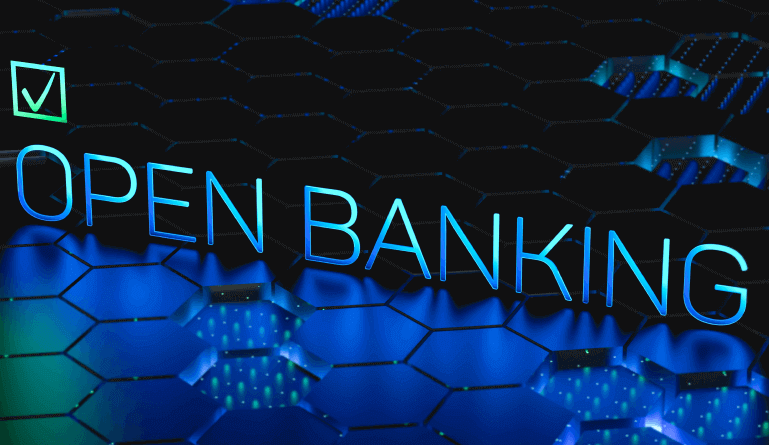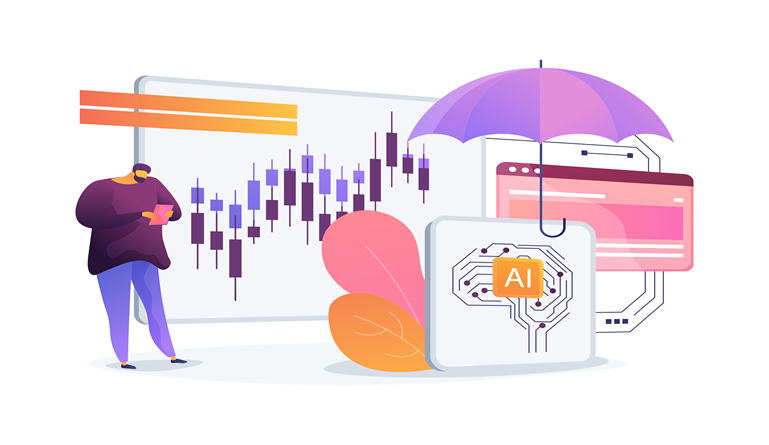As the financial services landscape becomes more connected, you need connected workflows that cut across stakeholders. This is where the concept of open banking comes in.
Nearly 50% of financial institutions (48%) considered open banking as a ‘must have’ in 2022, up from 38% in 2021; 85% say it is fostering greater collaboration across financial services. Another study of financial professionals conducted in 2021 indicates that open banking is now more popular than ever before. The percentage of CEOs who see open banking favorably climbed from 55% (2019) to 71% (2021). What do the aforementioned data and trends around open banking signify for business leaders?
To understand the implications of open banking, let’s first delve deeper into the concept.
What is Open Banking? Definition
Open banking is the practice of facilitating safe interoperability in the banking sector by permitting third-party payment services and other financial service providers access to financial transactions and other data from financial firms. Through application programming interfaces or APIs, third-party businesses may access the data.
As the global financial system continues to change, open banking is growing in popularity. This is because it enables faster, protected national and international transactions while offering customers far more options for managing their funds by utilizing third parties.
Why is Open Banking Such a Revolutionary Concept in Financial Services?
Changing client expectations and technology-centric legislation are significant factors propelling the expansion of open banking. Today, three factors come together to make the goal of open banking a reality: modern banking legislation, shifting cultural norms and consumer behavior, and the rise of new technologies.
Open banking is expected to offer consumers more options, better service, and seamless transactions. It serves as the bedrock for fintech growth, powering nearly every fintech system in use today, from payments to buy now, pay later (BNPL).
For instance, consumers may choose to use Amazon, PayPal, or Facebook to securely transfer money or gifts to friends via a simple click or swipe. No longer will you need to log into a bank account or input account details. Modern technologies and tech-centric policies have also assisted in making financial systems more flexible, intelligent, and automated by assisting developers. In accordance with the European PSD2 regulations, for instance, all banks are obligated to offer authorized third parties automated entry/access to consumer financial data.
In many ways, open banking is a way to accomplish some of the digital transformation goals that financial service providers are pursuing. Three essential areas are:
- Improving client experience
- Introducing novel digital services
- Rising earnings
In addition to these three goals, more mature institutions may use open banking to facilitate compliance, reduce risk exposure, and expedite administrative operations such as underwriting.
How Does Open Banking Work?
Open banking permits third-party payment systems, as well as other providers of financial services, access to the personal and financial data of their customers’ banks. It also paves the way for non-finance businesses (e.g., an e-commerce marketplace) to seamlessly incorporate services like payments – through a concept called embedded finance, which also, ultimately, relies on open banking. To make this happen, the following steps need to occur:
Step 1 – Consent
The consumer must grant permission for the disclosure of data, often through an online release form, after the approval of the terms and conditions. This enables API access for third-party suppliers to relevant shared data. The third-party can be Google, PayPal, or any other company that acts as the customer touchpoint.
Step 2 – API calling
APIs can handle transfers, transactions, or purchases from one bank to the other without requiring the cumbersome processes that customers previously had to perform.
Step 3 – API Activation
Furthermore, APIs can analyze a consumer’s transaction history to identify services and products that enhance the customer experience. Instances include a new credit card with a lower rate of interest or more cashback than the consumer’s existing cards, or a savings account that generates more interest than the consumer’s current methods of saving.
Step 4 – Data retrieval
Any open banking API request is centered on data, therefore, agile access to data ought to be the very first port of call for each and every new solution. However, prior to being able to disclose the data in your apps via APIs, you must guarantee that you have a comprehensive and precise view of all the data. Herein lies the value of data integration.
Step 5 – Breakdown of data silos (backend)
Application integration and data virtualization are generally the two methods for achieving this data integration. Physical integration allows APIs to securely contact your backend services directly. Data virtualization, on the other hand, generates an integrated virtualized layer of the data rather than physically integrating all your sources.
Step 6 – Service delivery
The APIs of third-party providers may then utilize the customer’s supplied data to provide a variety of financial services, like initiating new transactions and modifying customer accounts.
Benefits of Open Banking
There are numerous factors that have made open banking an accepted norm for businesses across the board. It allows you:
1. Cut down transaction fees
Consumers seldom consider the costs retailers must pay to accept credit card payments. Each card transaction may incur up to ten to fifteen separate fees, which may drive up the price of products and services.
Open banking opened the door for account-to-account (A2A) payments, which enable consumers to make purchases directly from their bank accounts. Consumers may also connect accounts to a retailer’s mobile application or website and complete purchases with a single click. Purchasing straight from bank accounts eliminates any card processing costs, which is advantageous for retailers and customers both.
2. Improve offline retail experiences
Thanks to open banking, businesses may leverage payment initiation services (PIS) to optimize the client checkout experience. Previously, in order to use digital transactions at a retail store, customers were required to pay for products through an internet transfer from the merchant’s bank account. To do this, customers would have to open many tabs, copy and paste, or even manually enter account information. This payment process was cumbersome, hazardous, and time-consuming.
With the advent of open banking, fintech businesses have developed payment initiation services (PIS). Using a QR code or barcode, these innovative solutions enable customers to make secure purchases in just a few clicks and with no effort. These enhanced payment flows also boost sales, adding to the merchant’s advantage.
3. Avail more services due to data integration
All of your financial information, including financial transactions, bank cards, investments, debts, pensions, and more, consolidated in one location enables infinite possibilities. For certain users (like a small, local firm), favorable loan arrangements are often unavailable. Others may be refused credit altogether. With greater availability of banking data, however, previously excluded customers and organizations will now have access to some financial products and instruments.
4. Make transactions more secure
Strong customer authentication (SCA), the part of the payment journey in which the customer takes an additional step to validate the payment, has assisted in reducing fraud. However, it has been deployed inconsistently for card payments, resulting in long payment processes.
In contrast, open banking transactions were designed with SCA in mind. For customers, the authentication procedure comprises a simple redirect to the bank app, where they verify the transaction before being redirected to the merchant’s site to finish the transaction.
Is There a Downside to Open Banking?
The rise and rise of open banking is undeniable. According to a report, one in four UK retailers anticipates that open banking will grow to be the most preferred payment method among clients over the next five years. Others suggest digital wallets or BNPL, which rely on open financial infrastructure. However, industry representatives must keep a few hazards in mind.
Not all banks can keep up with these technological advancements. This implies that their customers cannot make use of all the advantages offered by open banking. As more services shift online, customers will have fewer human encounters with their bankers, which might weaken their loyalties. Furthermore, like with any other digitally-based service, data breaches remain a possibility.
Regardless of the risks, conventional banking is being steadily replaced by open banking, and, indeed, the entry of fintech (prepared to compete on the market), will only reinforce this bold, new financial revolution. Ultimately, it is likely to benefit every party involved, from large banks to small and mid-sized businesses providing ultra-convenient experiences to their customers.
Other Useful Resources:
Open Banking and Reconsidering Revenue Generation





